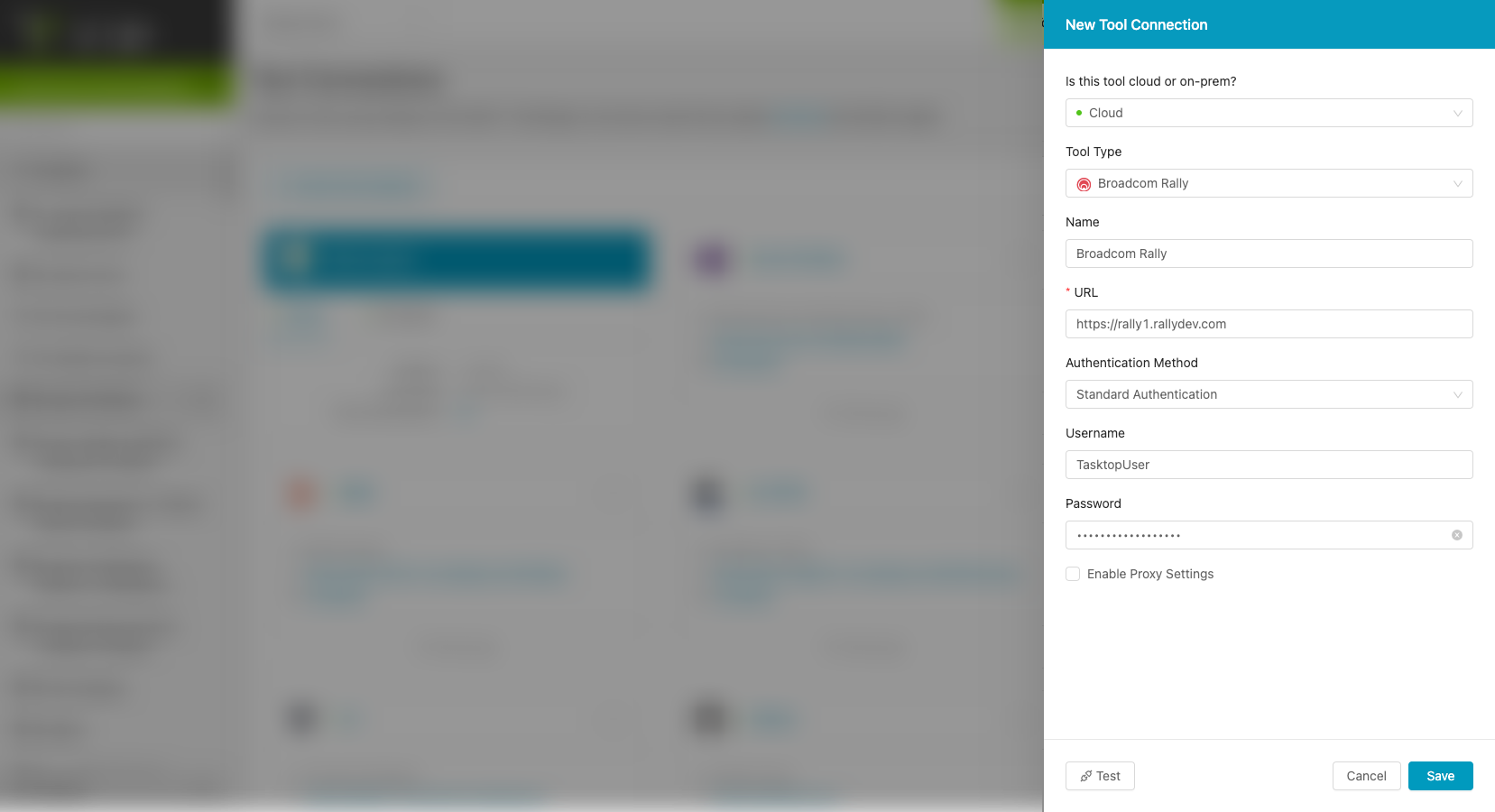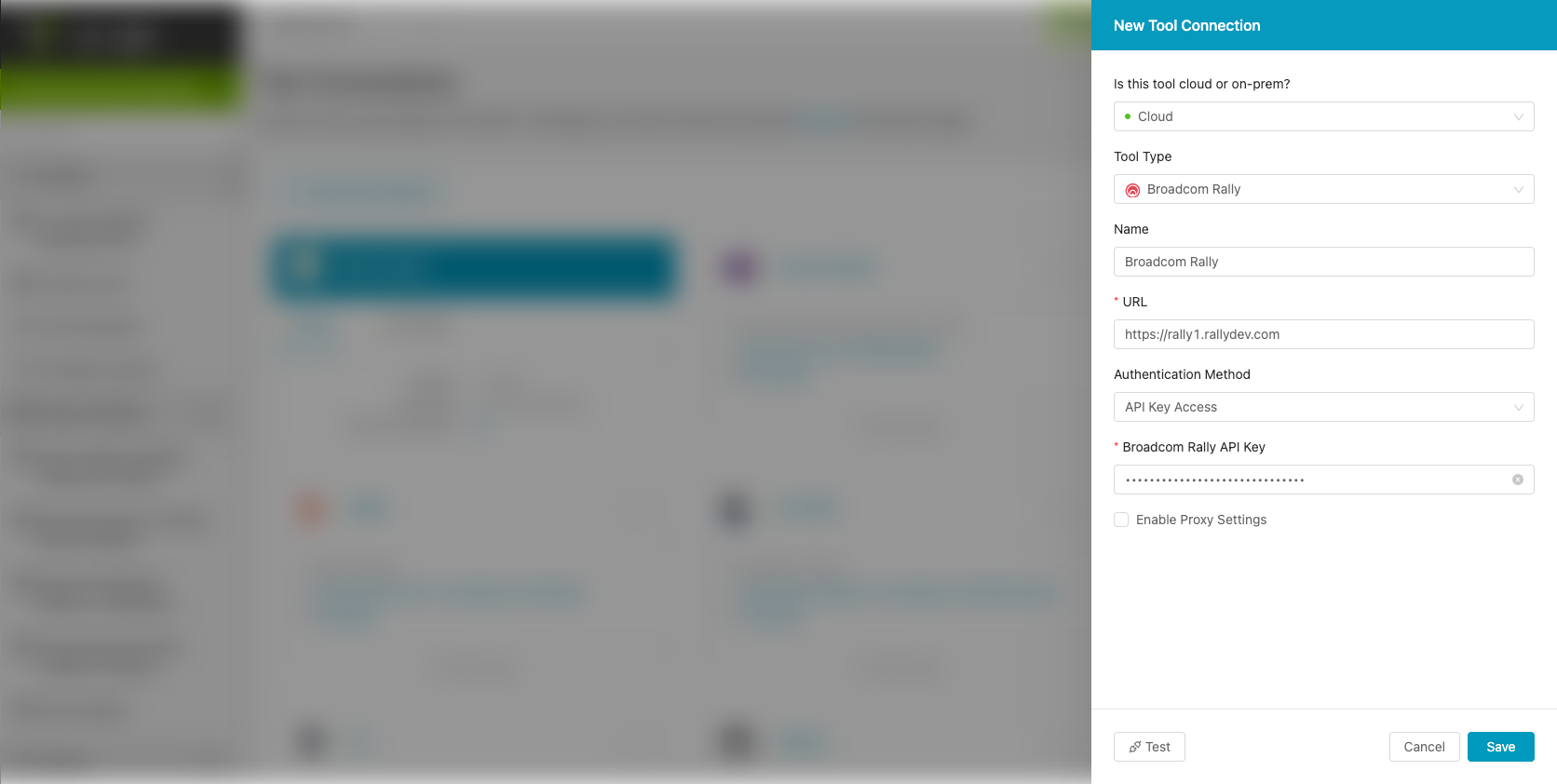Broadcom Rally
- Last updated
- Save as PDF
NOTE: End-Of-Life for Rally On Premise versions
Broadcom has announced the End-of-Life for all Rally On Premise versions. With this announcement, Planview Viz will be deprecating On Premise versions of Rally on June 30, 2023.
If you have any further questions, you can contact customer care for assistance.

Overview
Broadcom Rally (formerly CA Agile Central) provides a platform for Agile software delivery, planning and portfolio management.
Connector Setup Details
This section describes the basic steps needed to prepare your Rally instance for use with Viz.
Minimal User Permissions & Viz User
We recommend that you create a new user within your external tool, to be used only for Viz. This is the user information you will enter when setting up your tool connection within Planview Viz. By creating a new user, you will ensure that the correct permissions are granted.
In general, your user account should have sufficient permissions to read artifacts in your tool.
Your user should have a secure password or token. Please be aware that Viz will not allow you to save a tool connection utilizing a weak password/token, such as 'tasktop.'
List of minimal user permissions:
- Create a Rally user account to be used by Viz and ensure that it has sufficient permissions to read artifacts in the Rally workspace and projects to be used.
- If you have SSO enabled for Rally, the user must be configured to allow direct authentication as an exception, as the connector performs authentication directly against Rally. This can be configured by following the steps in the Rally help documentation.
Connecting to the Rally Repository
Standard Authentication
Required Fields:
- Location/Connection URL
- Example Format: https://rally1.rallydev.com
- Username
- Password

API Key Authentication
Required Fields:
- Location/Connection URL
- Example Format: https://rally1.rallydev.com
- Broadcom Rally API Key

Supported Artifacts
Supported Work Items
|
Supported Artifact Type |
Applicable Repository Versions |
Unique URL? |
|---|---|---|
|
Story |
Any supported repository version: |
Yes |
|
Defect |
Any supported repository version: |
Yes |
|
Task |
Any supported repository version: |
No |
Supported Containers
|
Containers that can be modeled as Flow Items |
Applicable Repository Versions |
Unique URL? |
|---|---|---|
|
N/A |
||
|
Containers used to define which artifacts are included in an Artifact Set |
||
|
Projects |
Any supported repository version: |
N/A |
Supported Field Types
Planview supports configuring rule-based modeling (i.e., conditional modeling) using the field types shown below.
Note: If one field of a given type is supported, others that are also that type in theory should also work. However, sometimes there are instances in which this is not the case due to the repository. So, while we can claim support for fields at the type level, there is a chance that some specific fields of a given type will not function properly.
|
Standard Field Type |
How is field type referenced in the repository? |
Sample Repository Fields Supported |
Particular Repository Fields NOT Supported |
|---|---|---|---|
|
|
String Text |
Formatted ID Revision Name Blocked Reason |
|
|
|
Drop Down List |
Type Scheduled State Release Iteration Priority |
|
|
|
Drop Down List (Multi Value) |
Tags Milestones |
|
|
|
Boolean |
Ready Expedite Blocked |
|
Functional Limitations
|
Category |
Limitation |
Applicable Repository Versions |
|---|---|---|
|
Good to Know |
Projects Artifact sets can be defined at the project/subproject level. However, in the Categorize Artifacts tab, the 'Project' column only identifies the higher level Workspace. Although the project/subproject level is not shown in the 'Project' column, it is important to note that Viz is only pulling in artifacts that are included in the projects, subprojects, or workspaces specified at the artifact set level. |
Any supported repository version: |

